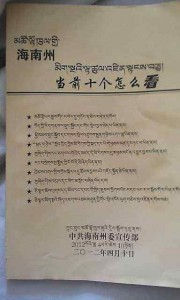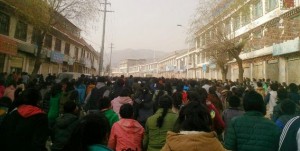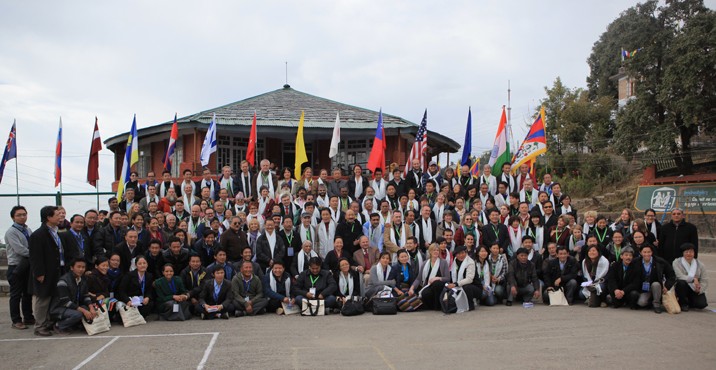Recently, Chinese authorities in the Tsolho region distributed a ten-point political questionnaire to students, followed by a speech that included: allegations and abusive remarks against His Holiness the Dalai Lama, accusing him of provoking unrest in the region; disrespectful remarks about people who have died of self-immolation; and derogatory comments about the Tibetan language. The document contained such questions as: Who is agitating for separatism and causing unrest? What is the reason behind self-immolation protest? What harm is caused by illegal public protests? Does bilingual education mean the deterioration of minority language?
In response, thousands of students from Chabcha Sorig Lobling Medical School gathered early in the morning of 26 November to peacefully march into the town of Chabcha, shouting slogans for equality of nationalities, freedom of language, respect for truth, and reestablishment of government.
Within two hours, Chinese security forces arrived, disrupting the demonstration and asserting control over the area. According to Mogru Tenpa, a Tibetan parliamentarian, “Chinese forces started to severely beat the students without provocation, injuring many.” Images that have surfaced in the media confirm the students’ injuries.
The school was then put under complete lock down and Chinese security forces sealed the area. Students have been barricaded inside the school for two days now while parents and local Tibetans have been barred from making any contact with those confined there. Mobile phone and internet connections are currently restricted in Chabcha village.
It appears that three students were arrested, while five students, who were severely injured by police beatings, have been taken to a hospital in Tsongon. A further 20 or so students remain in hospitals in Chabcha. They have not been permitted to see their families.
The students in Chabcha have demonstrated before; in 2010 they protested the Chinese government’s plan to remove all Tibetan textbooks from schools.
Earlier this month, on 9 November, students numbering in the thousands took to the streets of Rebgong (Chinese: Tongren) protesting for equality, freedom, and the return of His Holiness the Dalai Lama to Tibet. The students came from the four districts of the region – Thunring, Chentsa, Tsekhog, and Yulgan – and joined with students in Rebgong. They gathered in the early hours of the morning and began the peaceful procession.
“The students have been protesting in front of the major Chinese government offices and have jam-packed entire streets in the region,” Dorjee Wangchuk, an exiled Tibetan with contacts in the region said. “The students have been reciting the ancient Tibetan prayer hymn for His Holiness the Dalai Lama (Ghang-ri Ra-wei Kor-wei) and raised slogans calling for freedom in Tibet, the rights of the Tibetan people, and the return of the Dalai Lama to Tibet.” Later in the day, students joined with a large number of local Tibetans at Dolma Square in front of Rongwo monastery.
Armed forces were deployed to the area but there were no reports of any confrontation between security forces and students. Authorities stopped vehicular traffic due to the massive numbers of demonstrators in the streets.
The previous day saw hundreds of schoolchildren protesting against the Chinese government in Dowa township in Rebgong. The students shouted slogans while marching towards the local government office, where they pulled down a Chinese flag. In order to avoid trouble with authorities, teachers immediately sent a notice to the parents to take their children home and the school remained closed for the rest of the day.
The Chinese government has tried for decades to control and suppress Tibetans through cash bribes, disappearances, detainments and imprisonments, torture, constant surveillance, restriction of movement, and military crackdowns. But the growing Tibetan resistance suggests that such tactics will not crush their resolve.
Speaking about protesters in Tibet, Sikyong Dr. Lobsang Sangay said, “Almost all of them were born after the Chinese occupation of Tibet and the Cultural Revolution. They have grown up in the Chinese system, received Chinese education. They are the primary beneficiaries of whatever the Chinese government gave them. They are saying, ‘This is not what we want.’ ”







 Print
Print Email
Email